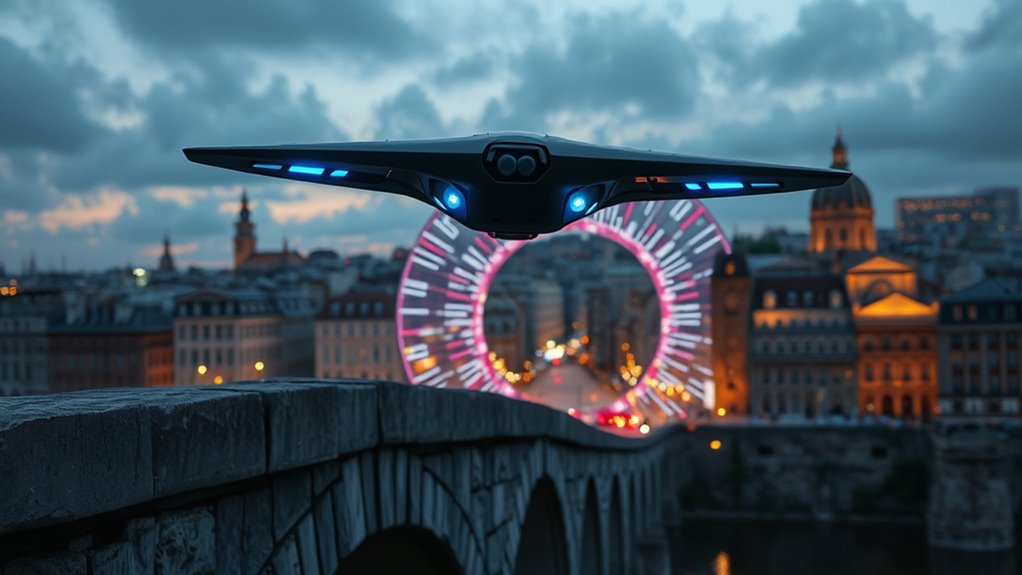Time-travel technology could potentially verify urban legends by allowing you to observe past events directly. However, current scientific and technical challenges, like energy needs, timeline stability, and ethical concerns, make this difficult to achieve now. While the idea remains intriguing, significant hurdles need addressing before it’s practical. If you explore further, you’ll discover what advancements and risks might shape the future of confirming legendary stories.
Key Takeaways
- Time travel could allow direct observation of historical events behind legends, enabling verification or debunking.
- Advanced sensors and quantum entanglement may facilitate detailed environmental recordings from the past.
- Cross-referencing past event data with existing historical records can help confirm legends’ authenticity.
- Technical challenges like energy requirements, temporal stability, and causality risks limit current verification capabilities.
- Ethical and paradox concerns complicate interventions, potentially affecting the accuracy and safety of legend verification.
The Science Behind Time-Travel Possibilities
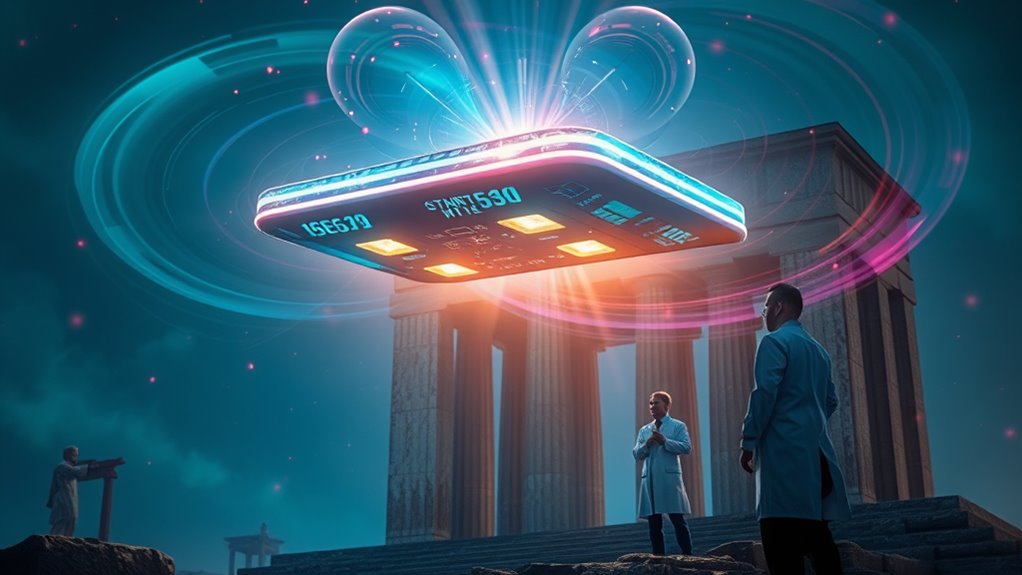
While time travel remains a popular topic in science fiction, scientists have explored several real theories that suggest it might be possible someday. One key idea involves quantum entanglement, where particles become interconnected regardless of distance, hinting at faster-than-light communication. Some theorists propose that manipulating entangled particles could enable information transfer across different times, though not yet actual time travel. However, these concepts raise concerns about temporal paradoxes—situations where cause and effect clash, like the famous grandfather paradox. While these paradoxes highlight potential logical issues with backward time travel, ongoing research in quantum physics continues to push the boundaries of what might be achievable. Although speculative, these theories provide a scientific foundation for understanding how time travel could one day become a reality.
Historical Evidence and the Challenge of Verification
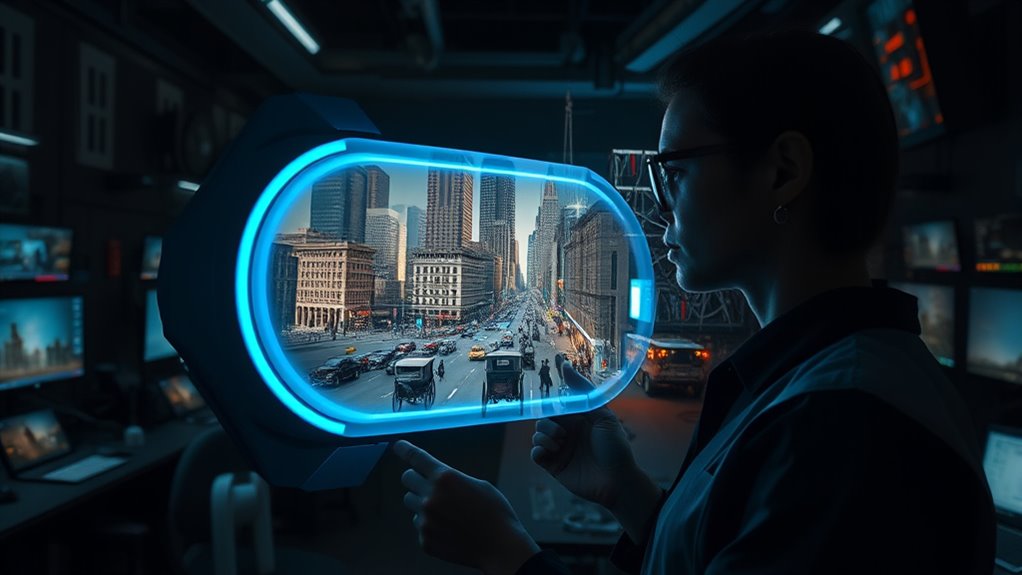
Historical evidence for time travel remains elusive, and verifying such claims is inherently challenging. In paranormal research, the lack of concrete, reproducible data makes it difficult to confirm extraordinary stories. Many urban legends and folklore are passed down through generations, complicating efforts to distinguish fact from fiction. When analyzing folklore, you must consider cultural context and the tendency for stories to evolve over time. Without verifiable physical evidence, it’s nearly impossible to prove that time travel played a role in these legends. Skeptics argue that most accounts are anecdotal, making validation impossible. To move forward, you need rigorous methods and critical analysis, but the elusive nature of historical evidence keeps in the domain of speculation rather than verified history.
Famous Urban Legends That Could Be Investigated

You might wonder if some urban legends are based on real events or sightings. Could historical accounts of strange creatures or unexplained appearances hold truths waiting to be uncovered? Exploring these stories might reveal surprising connections to our understanding of history and possible time-travel evidence.
Historical Sightings Revisited
Many urban legends hinge on supposed sightings of mysterious figures or unexplained phenomena that defy logical explanation. These stories often involve strange encounters with mythical artifacts or glimpses of figures from folklore preservation efforts. With time-travel technology, you could revisit these moments, verifying their truth or uncovering new details. Investigating these sightings might reveal hidden histories or confirm long-held suspicions.
Consider these intriguing possibilities:
- Re-examining a ghostly figure linked to a famous historical event
- Tracking down a mysterious artifact reported in a legendary encounter
- Clarifying the origins of a strange light seen during a purported sighting
- Cross-referencing eyewitness accounts with historical records
- Uncovering whether these legends are rooted in real events or folklore preservation efforts
Mythical Creatures Confirmed?
Could some of the legendary mythical creatures actually be real? With recent advances in technology, cryptid sightings might be more credible than you think. Time-travel could enable investigators to verify folklore origins that have long fueled urban legends. For example, creatures like the Loch Ness Monster or Bigfoot have been subjects of countless reports, yet remain unconfirmed by science. But if you could witness past cryptid sightings firsthand, you might uncover clues that support their existence. The idea that these legends stem from misunderstood encounters or misidentified animals is challenged by the possibility of verifying sightings across different eras. With time-travel, you could finally determine whether these mythical creatures are just folklore or hidden realities waiting to be uncovered.
Potential Methods for Using Time Travel to Confirm Stories
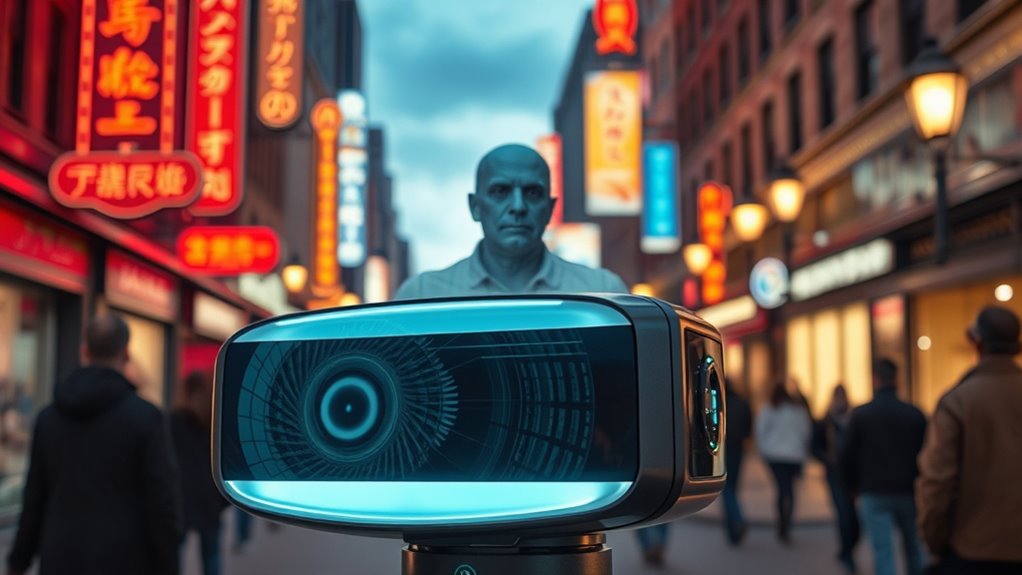
One promising way to verify urban legends with time travel involves pinpointing specific moments in history when the stories are said to have originated. By traveling to these precise points, you could observe firsthand whether the legends are based on real events or myths. To avoid confusion with parallel universes or alternate timelines, you’d focus on the original context, ensuring accurate comparison.
Travel to key moments in history to verify if urban legends are based on real events or myths.
- Use advanced sensors to record environmental details from the past
- Cross-reference historical records with your observations
- Travel to multiple points to verify consistency in the story
- Isolate yourself to prevent influencing events
- Consider the possibility of alternate timelines creating different versions of the legend
This approach helps you confirm if legends are rooted in actual events or just cultural fabrications.
Ethical Considerations and Risks in Temporal Exploration

As you explore time travel, you must consider significant ethical risks like paradoxes and causality disruptions that could alter history unexpectedly. Privacy concerns also arise when accessing past events involving individuals who never consented to be observed. Additionally, even minor changes might unintentionally impact the course of history, raising questions about your responsibility to preserve the timeline.
Paradoxes and Causality Risks
Time-travel technology introduces profound ethical challenges rooted in paradoxes and causality risks. You might create causal loops where actions in the past influence the present unexpectedly, leading to unintended consequences. Paradox resolution becomes vital to prevent scenarios like the “grandfather paradox,” where altering history could erase your existence. These risks challenge our understanding of cause and effect, raising questions about responsibility and safety.
- Charting causal loops without causing irreversible damage
- Ensuring paradox resolution to avoid logical inconsistencies
- Preventing unintended alterations to the timeline
- Addressing moral dilemmas of changing past events
- Balancing curiosity with the potential for catastrophic consequences
Temporal Privacy Concerns
While the prospect of exploring different moments in history offers incredible opportunities, it also raises serious ethical concerns about privacy. Accessing past events could expose sensitive personal data, leading to critical data privacy issues. You might unintentionally observe private moments or confidential information, risking harm or misuse. Surveillance concerns intensify if time-travel technology is exploited for monitoring individuals without consent. Such unchecked access could create a chilling effect, eroding trust and infringing on personal freedoms. Protecting privacy requires strict guidelines on what historical data can be accessed and how it’s used. Without safeguards, the temptation to invade personal spaces or exploit sensitive information increases, posing significant ethical dilemmas in temporal exploration. Balancing discovery and privacy becomes essential to avoid serious moral violations.
Unintended Historical Impact
Exploring the past with time-travel technology can unintentionally alter historical events, leading to unforeseen consequences that ripple through time. Small changes might seem harmless but can trigger complex issues like paradoxes, challenging causality preservation. You could accidentally erase important figures or events, creating a ripple effect on the present. To avoid chaos, paradox resolution techniques are essential, ensuring timeline integrity. Consider these risks:
- Altering key historical moments unknowingly
- Creating causal loops that defy logic
- Changing cultural or scientific developments
- Triggering unintended political shifts
- Losing valuable historical insights
Balancing ethical concerns with technological capabilities demands careful planning. Maintaining causality preservation helps prevent catastrophic timeline shifts, but the risk of unintended impact remains significant. As you explore, understanding these dangers is vital to responsible temporal exploration.
The Impact of Verified Legends on Cultural Understanding
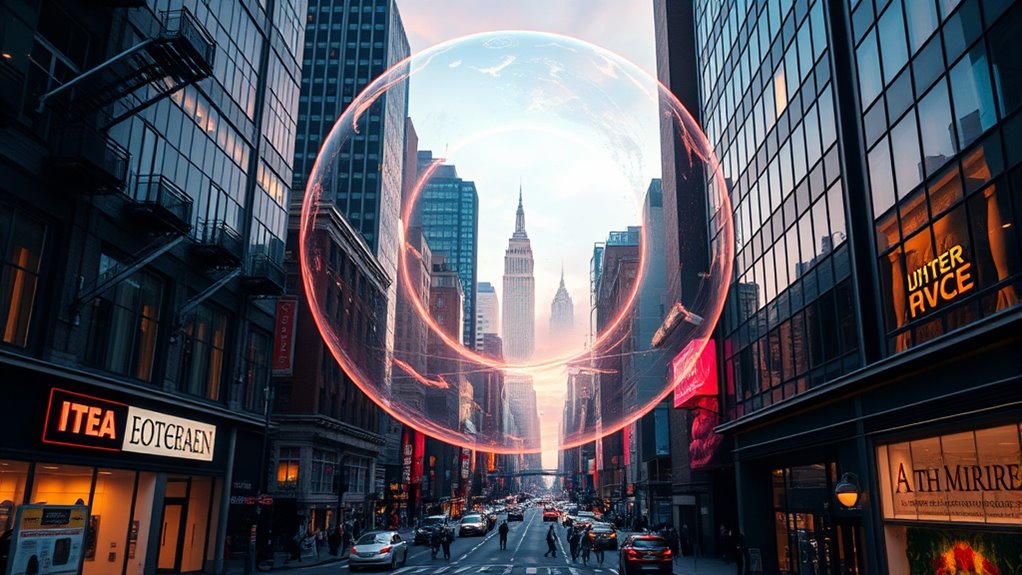
Verified legends often serve as powerful catalysts for shaping cultural understanding, as they provide tangible stories that connect communities to their history and identity. When legends are confirmed through time-travel technology, their role in reinforcing cultural symbolism becomes even more significant. These verified stories deepen your appreciation for folklore preservation, ensuring that traditions are not lost over generations. They foster a sense of continuity, allowing you to see how legends reflect values, fears, and hopes of past societies. As legends gain factual backing, they become more than myths—they evolve into shared cultural touchstones. This process strengthens communal bonds and promotes a deeper understanding of diverse backgrounds, ultimately enriching your perception of cultural diversity and the importance of preserving collective memory.
Limitations and Technical Hurdles of Temporal Navigation
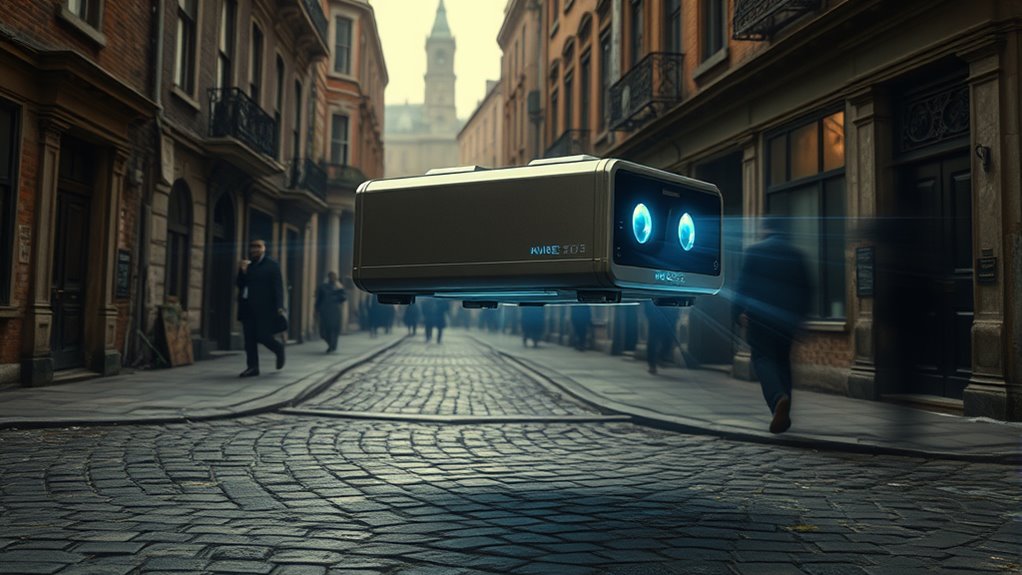
Although verified legends can deepen your understanding of cultural history, accessing these stories via time-travel tech faces major hurdles. Quantum entanglement, for example, complicates precise positioning, making accurate navigation difficult. Relativistic effects, like time dilation, distort your perception of past timelines, risking displacement errors. Technical limitations also include energy requirements so immense they’re often unrealistic. Signal stability becomes a challenge over long distances, risking data loss. Additionally, creating a stable temporal anchor remains problematic, as unintended shifts can send you off-course. These hurdles mean that, currently, traveling accurately to specific moments in history is mostly theoretical. Overcoming these issues is vital before you can reliably verify legends and uncover hidden truths from the past.
Case Studies: Past Attempts to Validate Legends Through Technology
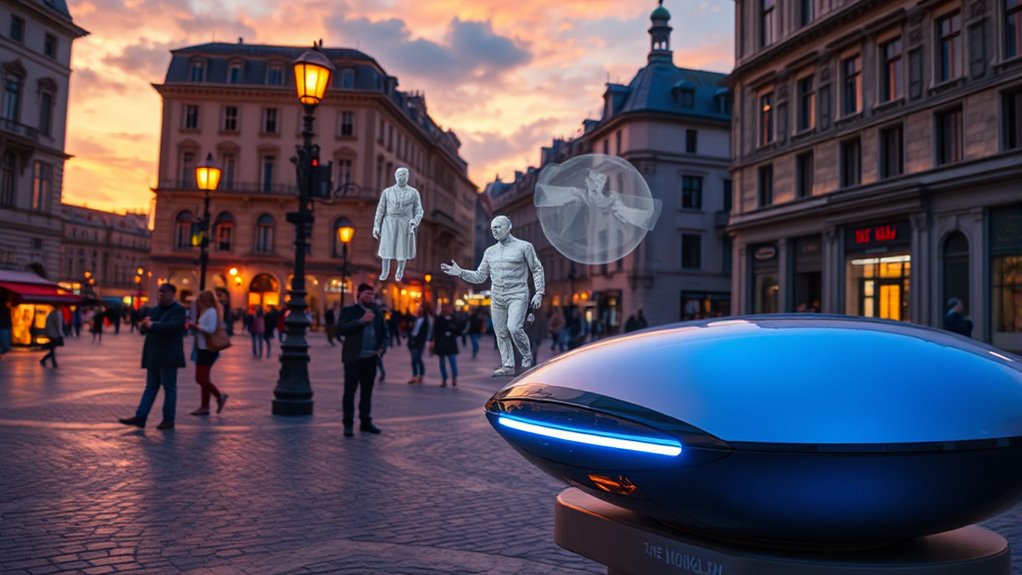
Throughout history, researchers have attempted to validate legends by deploying emerging time-travel technologies, often with mixed results. One notable effort involved using quantum entanglement to connect present-day observers with past events, hoping it would reveal hidden truths. Teams also experimented with chrono stabilizers to maintain temporal integrity during these investigations. In one case, scientists tried to verify a legendary sighting by synchronizing entangled particles across different times, but interference caused unreliable data. Although some experiments hinted at potential connections, they fell short of definitive proof. These attempts highlight the challenges of applying advanced technology to validate urban legends. Despite setbacks, such case studies provide valuable insights, pushing the boundaries of what’s possible in temporal research and inspiring future innovations.
Future Prospects and the Broader Implications of Time-Travel Verification
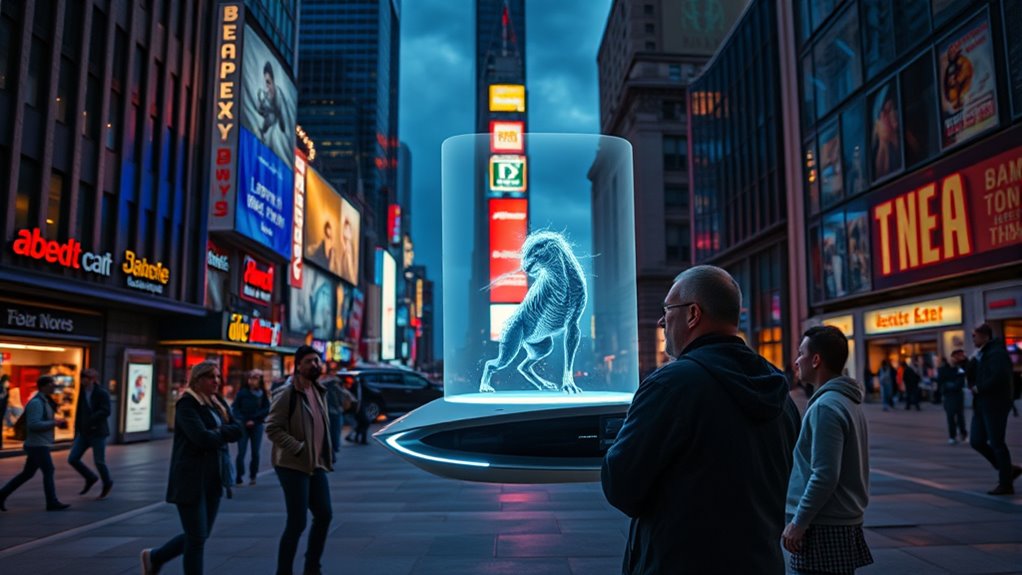
Building on the efforts to use technology to validate legends, future advancements in time-travel verification hold the potential to revolutionize our understanding of history and reality. With breakthroughs in quantum entanglement, you might soon confirm events across timelines instantly, bypassing traditional limitations. However, verifying past events raises concerns about temporal paradoxes, where changes could ripple through time unpredictably. As technology develops, you could explore historical mysteries more directly, but risks remain, like creating alternate realities. The broader implications include reshaping historical narratives, ethical debates about altering the past, and the possibility of discovering hidden truths. Ultimately, these advances could uncover new dimensions of knowledge—but also challenge your perception of reality’s stability.
- Confirm legendary events firsthand
- Understand historical inaccuracies
- Prevent or cause temporal paradoxes
- Redefine our grasp of reality
- Navigate ethical dilemmas in time travel
Frequently Asked Questions
Could Time Travel Inadvertently Alter Historical Events or Timelines?
You wonder if time travel could inadvertently alter historical events or timelines. If it does, causal paradoxes might occur, disrupting the natural order. To prevent this, many theories suggest mechanisms for timeline preservation, stopping changes from spreading or affecting the past considerably. While fascinating, these ideas highlight the risks of unintended consequences, emphasizing the importance of strict controls and understanding before exploring time travel’s true potential.
What Safeguards Would Prevent Misuse of Time-Travel Verification Technology?
Imagine a clock that ticks only in the right direction—that’s how safeguards work for time-travel verification tech. You’d implement strict ethical oversight, ensuring responsible use and preventing misuse. Privacy concerns would be addressed with encrypted data and access controls, so personal info stays protected. These measures act like a safety net, catching any misuse before it happens, giving you confidence in exploring history without risking chaos or privacy breaches.
How Accurately Can We Date or Authenticate Historical Urban Legend Evidence?
You can achieve high accuracy in authenticating historical urban legend evidence through advanced artifact authentication techniques and meticulous evidence preservation. By analyzing material composition, stratigraphy, and contextual data, you verify the age and origin of artifacts. Combining scientific methods with preserved evidence helps you determine authenticity, making it possible to distinguish genuine historical claims from myths or fakes. This approach provides a reliable way to validate urban legends with scientific precision.
Are There Legal or Jurisdictional Issues With Time-Travel Investigations?
Did you know that over 60% of legal experts highlight the complexity of legal complications in innovative fields? When exploring time-travel investigations, you face jurisdiction conflicts and legal hurdles because current laws don’t address temporal travel. You must navigate these legal complications carefully, as jurisdiction conflicts could delay or derail your efforts. Understanding these issues is essential for ensuring that your time-travel experiments stay within legal boundaries and avoid future disputes.
How Would Society Respond if a Legendary Event Was Conclusively Proven?
If society confirms a legendary event as historically credible, you’d see a major cultural impact, reshaping beliefs and historical understanding. People might debate its authenticity and significance, leading to renewed interest in related stories. You’d also witness shifts in education and media, as the event’s validation changes perceptions. Overall, society would grapple with integrating this newfound knowledge, balancing skepticism with curiosity, and redefining what’s accepted as truth.
Conclusion
Imagine finally unraveling those age-old legends with a flick of a time machine, only to realize some stories are better left as mysteries. You chase the truth across centuries, but perhaps it’s the uncertainty that keeps history alive. Ironically, the quest to verify legends might just prove that some tales are timeless precisely because they can’t be proven—making the mystery all the more enchanting. After all, isn’t that what legends are really about?

